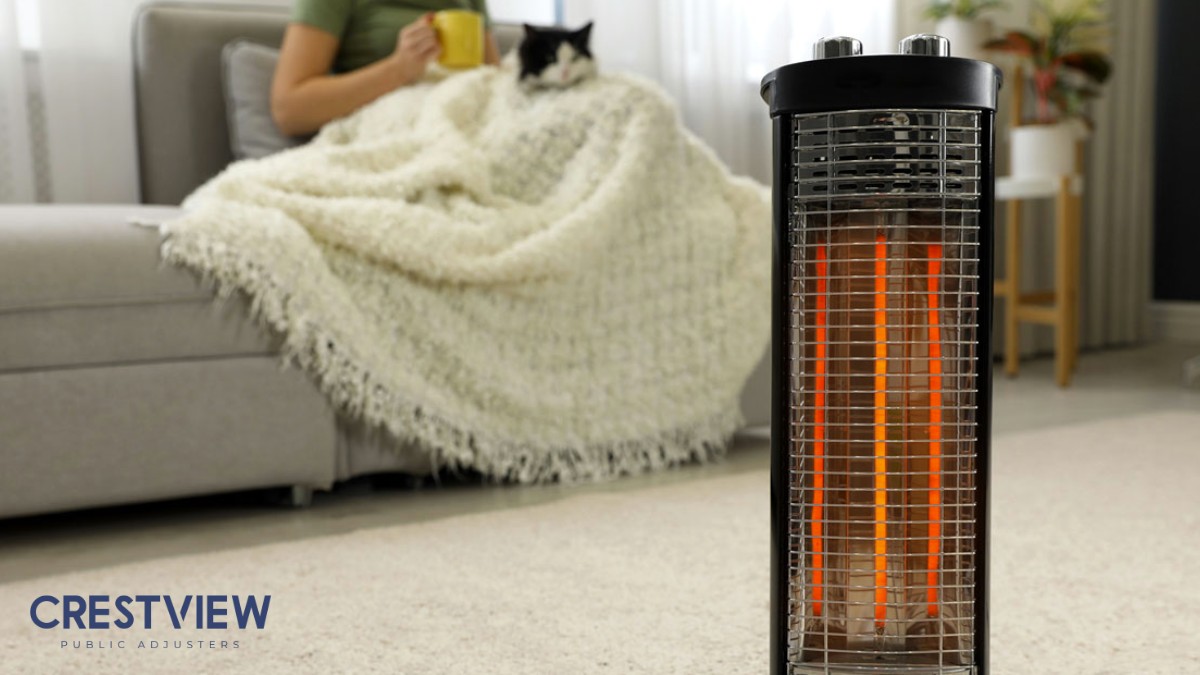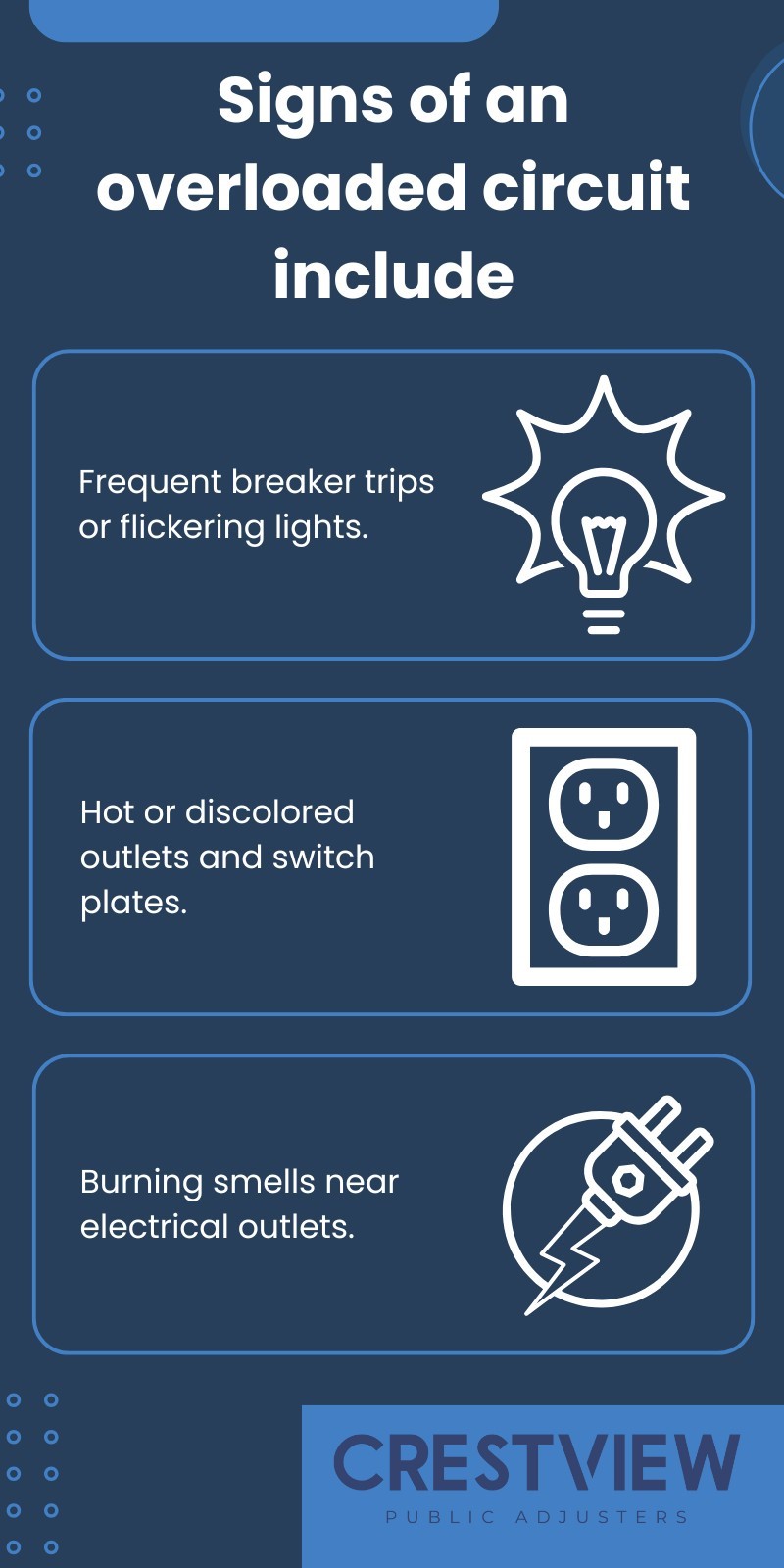Key Points:
- Heating equipment is a leading cause of house fires in winter, with space heaters, fireplaces, and furnaces posing significant risks.
- Poor maintenance, flammable materials, and improper use increase the chances of fires.
- Preventive measures, like regular inspections and safe heating practices, can significantly reduce risks.
Heating equipment is a major fire hazard in winter, contributing to thousands of home fires annually. The U.S. Fire Administration reports that heating-related fires account for about 45,000 residential fires every year, causing hundreds of deaths and significant property damage. The most common culprits include space heaters, fireplaces, wood stoves, and furnaces. If not properly maintained or used, these devices can quickly turn into fire hazards.
Understanding the risks associated with heating equipment and following proper safety measures is crucial to protecting your home and loved ones.
The Leading Causes of Heating-Related Fires
1. Improper Use of Space Heaters
Space heaters are responsible for nearly 40% of heating-related house fires. While they provide convenient warmth, they also pose a serious risk if used improperly.
Many fires occur because space heaters:
- Are placed too close to flammable materials like curtains, bedding, or furniture.
- Are left running unattended, increasing the risk of overheating or electrical malfunctions.
- Overload electrical outlets, causing wiring to overheat and ignite.
To minimize these risks, always use a space heater with an automatic shut-off feature and place it at least three feet away from anything flammable. Never leave it on while sleeping or when leaving the house.
2. Fireplace and Chimney Hazards
Fireplaces provide cozy warmth, but they can also be a major fire hazard if not properly maintained. The accumulation of creosote in chimneys is a major contributor to chimney fires. Creosote is a highly flammable substance that accumulates when wood burns inefficiently.
Common risks associated with fireplaces include:
- Blocked chimneys that trap smoke and heat, potentially igniting creosote.
- Flying embers that can land on rugs, furniture, or nearby decorations.
- Improper ash disposal leading to smoldering fires outside the fireplace.
To prevent chimney fires, schedule an annual inspection and cleaning by a certified chimney sweep. Always use a sturdy fireplace screen to prevent sparks from escaping, and never burn paper, trash, or treated wood, as they can cause excessive creosote buildup.

3. Furnace Malfunctions and Neglect
A neglected or malfunctioning furnace can quickly become a fire hazard in winter. Dirty filters, faulty wiring, and gas leaks are some of the biggest risks associated with furnaces.
Warning signs that your furnace may be a fire hazard include:
- Strange burning smells or excessive dust buildup.
- Unusual noises, such as banging or rattling.
- A yellow or flickering pilot light, which may indicate carbon monoxide issues.
Routine maintenance is key to preventing furnace-related fires. Replace air filters regularly, ensure vents are unobstructed, and schedule an annual inspection by a professional HVAC technician to check for leaks, faulty wiring, or worn-out components.
4. Overloaded Electrical Circuits
As temperatures drop, households often rely on multiple heating devices simultaneously, leading to electrical overloads. This can cause circuit breakers to trip or, worse, wiring to overheat and spark a fire.

To prevent overloads, avoid plugging multiple high-wattage appliances into a single outlet. Use power strips with built-in surge protectors and ensure your home’s electrical system is up to code.
Essential Fire Safety Tips for Winter
Even with the best precautions, fire hazards in winter remain a significant concern. Taking the following steps can help keep your home and family safe.
1. Maintain and Inspect Heating Equipment Regularly
- Schedule annual inspections for fireplaces, furnaces, and chimneys.
- Clean air filters, vents, and ducts to reduce dust accumulation.
- Ensure space heaters have automatic shut-off functions.
2. Follow Safe Heating Practices
- Keep flammable materials at least three feet away from heat sources.
- Never leave heating devices unattended or running overnight.
- Use properly ventilated rooms to prevent carbon monoxide buildup.
3. Be Prepared for Emergencies
- Install smoke alarms in every sleeping area and test them monthly.
- Keep fire extinguishers in key locations, especially near heat sources.
- Develop and practice a home fire escape plan with your family.
How to Handle Fire Damage and Insurance Claims
Even with the best precautions, accidents happen. If a fire damages your home, the aftermath can be overwhelming—especially when dealing with insurance claims. Many homeowners struggle to get full compensation for their losses because they aren’t familiar with policy terms or insurance loopholes.

